Home>Articles>17 Victorian Houses With The Decorative Details That Define The Era
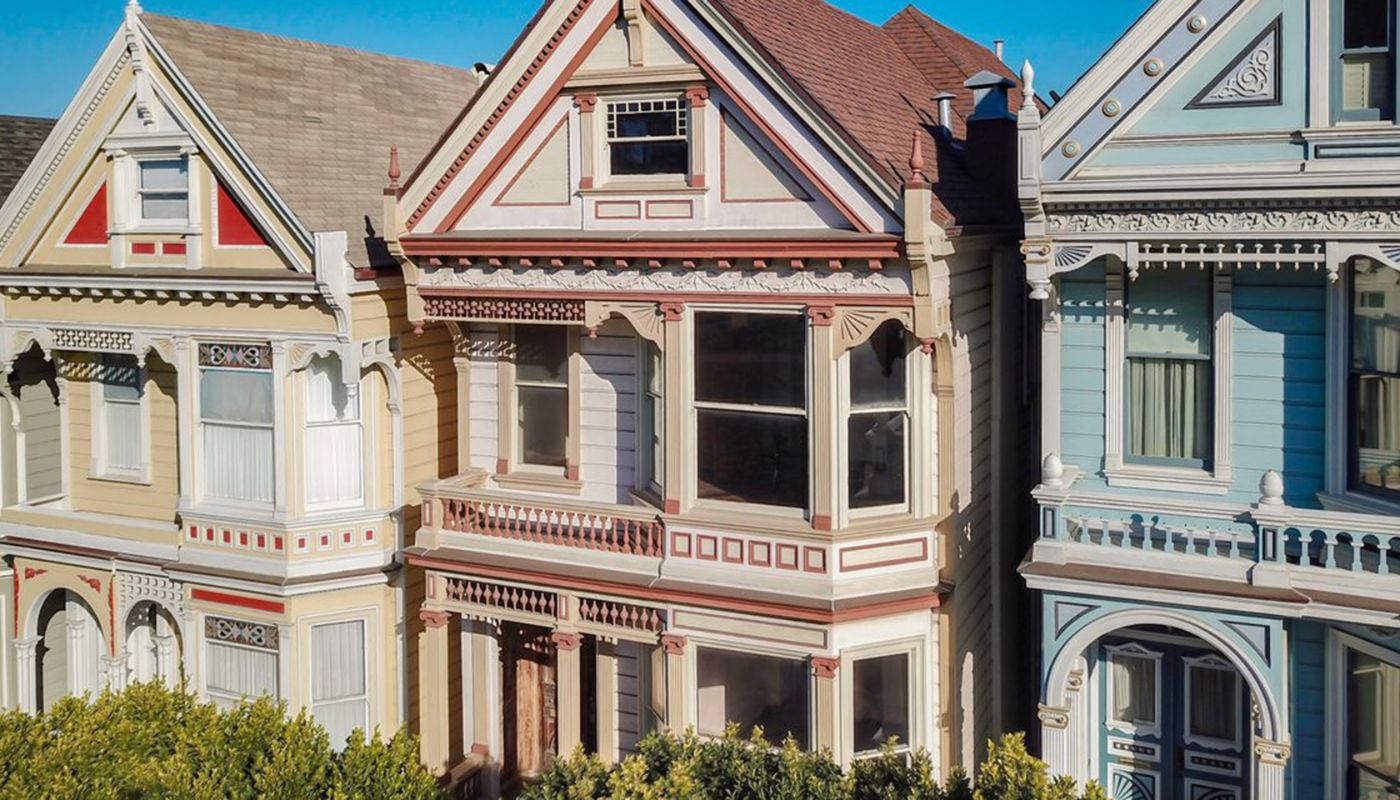

Articles
17 Victorian Houses With The Decorative Details That Define The Era
Modified: October 20, 2024
Discover 17 stunning Victorian houses with exquisite decorative details that embody the essence of the era. Explore our articles to dive into the rich history and architectural beauty of these iconic homes.
(Many of the links in this article redirect to a specific reviewed product. Your purchase of these products through affiliate links helps to generate commission for Storables.com, at no extra cost. Learn more)
Introduction
The Victorian era, spanning from 1837 to 1901, was a time of great cultural and architectural significance. It was during this period that many elaborate and ornate architectural styles emerged, reflecting the prosperity and aesthetic values of the time.
Victorian houses are known for their distinctive design elements, attention to detail, and grandeur. From the intricate facade decorations to the elegant interior features, these houses epitomize the architectural beauty of the era.
In this article, we will explore the decorative details that define Victorian houses. From the ornate facades to the lavish interiors, we will delve into the key features that make these homes truly remarkable. Whether you are an architecture enthusiast, a history buff, or simply appreciate the beauty of well-crafted design, join us on this journey through the Victorian era.
As we delve into the topic, it’s important to note that these houses come in various architectural styles, including the Queen Anne style, Italianate style, Romanesque style, and more. Each style has its own unique features and design elements that contribute to the overall aesthetic of the house. Let’s take a closer look at some of these architectural styles and the key features that define them.
Key Takeaways:
- Victorian houses are architectural masterpieces that showcase the opulence, elegance, and attention to detail of the Victorian era. From ornate facades to lush gardens, every feature reflects the exquisite craftsmanship and refined taste of the time.
- The fusion of styles, vibrant colors, and luxurious materials in Victorian houses creates a captivating and visually stunning living environment. These homes serve as a testament to the enduring legacy of the Victorian era, captivating and inspiring us with their timeless beauty.
The Victorian Era: A Historical Overview
The Victorian era was named after Queen Victoria, who reigned over the United Kingdom from 1837 to 1901. This era was characterized by significant social, political, and technological changes, which had a profound influence on the architecture and design of the time.
During the 19th century, the Industrial Revolution brought about a dramatic shift in society, with advancements in manufacturing, transportation, and communication. This led to an increase in wealth and prosperity, particularly among the middle class.
Victorian architecture reflected the values, aspirations, and tastes of this rapidly changing society. The middle class sought to emulate the grandeur and elegance of the upper class, resulting in the construction of elaborate and ornate houses.
One notable aspect of the Victorian era was the revival of historical architectural styles. Styles such as Gothic Revival and Italianate became popular, as people looked to the past for inspiration and sought to create a sense of nostalgia and romanticism in their homes.
Additionally, technological advancements in construction techniques allowed for the use of new materials and the creation of intricate details. The introduction of cast iron, plate glass, and mass-produced decorative elements made it possible for architects and builders to add elaborate ornamentation to houses.
Furthermore, the Victorian era was a period of exploration and discovery. The increasing travel opportunities and exposure to different cultures influenced the architectural styles of the time. This is evident in the incorporation of exotic motifs and influences from various regions, such as the use of Oriental and Moorish design elements.
Overall, the Victorian era was a time of creativity and innovation in architecture. The houses built during this period were a reflection of the changing society, combining historical influences with new materials and techniques. These houses continue to be admired and cherished today for their unique and timeless beauty.
Architectural Styles of the Victorian Era
The Victorian era saw the emergence of various architectural styles, each with its own unique characteristics and design elements. These styles were influenced by a combination of historical revival, cultural exploration, and technological advancements. Let’s explore some of the prominent architectural styles of the Victorian era:
- Gothic Revival: Inspired by the medieval Gothic architecture, this style was characterized by pointed arches, decorative tracery, and ornate detailing. Houses in the Gothic Revival style often featured steep gable roofs, intricate stone carvings, and lancet windows.
- Italianate: Drawn from Italian Renaissance architecture, the Italianate style was known for its symmetrical facades, tall windows, and low-pitched roofs. These houses often had decorative brackets, cornices, and columned entryways.
- Queen Anne: Considered one of the most elaborate Victorian styles, Queen Anne houses featured asymmetrical facades, multiple gables, and towers. Elaborate ornamentation, such as spindlework and patterned shingles, was common in Queen Anne architecture.
- Second Empire: Influenced by French architecture, the Second Empire style was characterized by mansard roofs with dormer windows. These houses often had symmetrical facades, elaborate ironwork, and decorative brackets.
- Stick Style: The Stick Style emphasized exposed wooden structural elements, with houses featuring decorative trusses and vertical siding. This style often incorporated elements of the Gothic Revival and Queen Anne styles.
- Romanesque: Inspired by the ancient Roman architecture, Romanesque houses had heavy stone walls, round arches, and fortress-like appearance. These structures exuded a sense of grandeur and permanence.
These architectural styles were not rigidly adhered to and often blended together, resulting in eclectic designs that showcased the individuality and taste of the homeowners. Architects and builders of the time drew inspiration from different styles, creating unique and visually stunning houses.
It’s essential to note that the architectural styles varied regionally, with different interpretations and adaptations in different parts of the world. The architectural influences of the Victorian era continue to be seen in many houses today, as they stand as a testament to the rich and diverse history of the time.
Key Features of Victorian House Design
Victorian house design is characterized by its attention to detail and ornate embellishments. These houses were often grand in scale, intended to showcase the wealth and status of their owners. Here are some key features that define Victorian house design:
- Elaborate Facades: Victorian houses are known for their intricate and decorative facades. Elaborate patterns, textures, and details, such as ornamental moldings, carved stone accents, and intricate brickwork, were common.
- Towers and Turrets: Many Victorian houses featured towers or turrets, which added height, visual interest, and a touch of grandeur to the structure. These architectural elements were often adorned with decorative details.
- Steep Roofs: The roofs of Victorian houses were typically steeply pitched, creating a sense of drama and grandeur. These roofs were often adorned with decorative elements, such as finials, cresting, and ornamental vents.
- Ornate Porches: Victorian houses often had elaborate front porches, providing a welcoming entryway and additional outdoor space. These porches featured decorative columns, intricate railings, and detailed woodwork.
- Bay Windows: Bay windows were a common feature in Victorian houses, providing additional light, space, and architectural interest. These windows were often accentuated with decorative trims and stained glass.
- Decorative Woodwork: Victorian houses showcased exquisite woodwork, such as intricate fretwork, gingerbread trim, and decorative brackets. These ornamental details were often found on the eaves, gables, and balconies.
- Stained Glass: Stained glass windows were a popular feature in Victorian houses, adding a touch of elegance and color. These windows featured intricate patterns and vibrant hues, often depicting floral or geometric designs.
- High Ceilings: Victorian houses were known for their high ceilings, often reaching 10 feet or more. This created a sense of spaciousness and allowed for the display of elaborate chandeliers and ceiling medallions.
- Rich Interior Moldings: Victorian houses boasted elaborate interior moldings, such as crown moldings, chair rails, and baseboards. These details added a sense of grandeur and refinement to the rooms.
- Fireplaces: Many Victorian houses featured ornate fireplaces, often made of marble or intricately carved wood. These fireplaces served both functional and decorative purposes, adding warmth and visual interest to the rooms.
These key features of Victorian house design contribute to the overall charm and beauty of these architectural marvels. Each element is meticulously crafted to create a sense of elegance, luxury, and attention to detail that is synonymous with the Victorian era.
Exquisite Exterior Details: The Ornate Facades
One of the defining features of Victorian houses is their ornate facades. The exteriors of these houses were meticulously designed to showcase intricate details and decorative elements. Let’s explore some of the exquisite exterior details that adorned Victorian facades:
- Ornamental Moldings: Victorian facades often featured ornamental moldings, which added depth, texture, and visual interest to the exterior. These moldings could be found around windows, doors, cornices, and along the roofline.
- Carved Stone Accents: Many Victorian houses incorporated carved stone accents into their facades. These accents were often in the form of keystones, lintels, corbels, and decorative medallions. They added a touch of elegance and sophistication to the exterior.
- Elaborate Brackets: Victorian facades were embellished with decorative brackets that served both structural and aesthetic purposes. These brackets were often found under eaves, balconies, and porches, adding a sense of intricacy and craftsmanship to the overall design.
- Intricate Ironwork: Victorian houses showcased elaborate ironwork, such as decorative railings, gates, and balconies. These wrought iron details added a touch of elegance and provided a visual contrast to the other exterior materials.
- Patterned Brickwork: Many Victorian facades featured intricate patterns created with different colored bricks. These patterns could be in the form of arches, quoins, or bands, adding depth and visual appeal to the exterior walls.
- Textured Shingles: Some Victorian houses employed textured shingles, such as fish-scale or diamond-shaped shingles, to enhance the visual interest of the facade. These shingles added a layer of dimension and uniqueness to the exterior design.
- Decorative Gables: Gables were a common architectural feature in Victorian houses, and they were often adorned with decorative elements. Ornate trim, intricate spindles, carved finials, and decorative bargeboards were common additions to gables, further enhancing the aesthetic appeal.
- Multiple Siding Materials: Victorian facades often incorporated multiple siding materials to create texture and visual contrast. This could include a combination of brick, stone, wood, and stucco, showcasing the craftsmanship and attention to detail involved in the construction.
The ornate facades of Victorian houses were a testament to the craftsmanship and artistry of the time. These exquisite exterior details showcased the wealth and status of their owners, while also captivating passersby with their intricate designs and beauty. The attention to detail found in these facades is a true hallmark of Victorian architecture.
Read more: How To Design A Victorian House
Grand Entryways: Elaborate Doors and Porches
A striking feature of Victorian houses is their grand entryways, which serve as the focal point of the facade. These entryways are often adorned with elaborate doors and porches, exuding a sense of elegance and welcoming charm. Let’s delve into the intricate details of Victorian entryways:
Elaborate Doors: Victorian entry doors were designed to make a statement. They were often crafted from solid wood and featured intricate carvings, ornate paneling, and decorative glass inserts. The doors were a reflection of the homeowner’s status and taste, with designs ranging from intricate patterns to floral motifs.
The Victorian era saw the emergence of various door styles, including the highly popular double doors with large glass panels. These doors not only allowed for an abundance of natural light to flow into the entryway but also provided a grand entrance for guests.
Decorative Porches: Victorian houses often boasted elaborate front porches, serving as an extension of the living space and providing a welcoming transition from the outdoors to the interior. These porches were adorned with decorative columns, intricate railings, and ornate woodwork.
The porch columns varied in style, including square, fluted, or turned, and were often topped with decorative capitals. The railings featured intricate balusters and often incorporated geometric patterns or intricate scrollwork. The overall effect was an inviting and visually appealing entryway that showcased the craftsmanship and attention to detail of the Victorian era.
Canopies and Roofed Entryways: In addition to porches, some Victorian houses featured canopies or roofed entryways that added another layer of elegance to the grand entry. These canopies were typically supported by decorative brackets and adorned with intricate trim, creating a cohesive and visually striking architectural feature.
The roofs of these entryways were often designed to complement the overall style of the house, with steep gables or mansard roofs adding a touch of drama and sophistication.
Stained Glass Inserts: Stained glass inserts were also commonly found in Victorian entryways. These glass panels often depicted intricate patterns, floral designs, or even colorful landscapes. The stained glass added a sense of beauty and artistry to the entryway, creating a captivating play of light and color.
The combination of elaborate doors, decorative porches, and stained glass inserts exemplified the attention to detail and design found in Victorian entryways. They truly set the tone for the rest of the house, welcoming guests into a world of grandeur and elegance.
Stained Glass Windows: A Delicate Art Form
Stained glass windows are an iconic feature of Victorian houses, adding a touch of elegance and beauty to the interior and exterior. These meticulously crafted windows are a true testament to the delicate art form of stained glass. Let’s explore the significance and intricacy of stained glass windows in Victorian architecture:
Aesthetic Appeal: Stained glass windows are revered for their remarkable aesthetic appeal. The vibrant colors, intricate designs, and play of light create a mesmerizing effect, enhancing the overall ambiance of the space. In Victorian houses, stained glass windows were seen as a symbol of wealth and sophistication.
Motifs and Themes: Stained glass windows in Victorian houses often featured a variety of motifs and themes. Floral patterns, geometric designs, and nature-inspired scenes were popular choices. Biblical scenes, heraldic symbols, and mythical creatures were also commonly depicted. These designs allowed homeowners to personalize their windows while adding a touch of storytelling and symbolism to their homes.
Craftsmanship and Technique: The creation of stained glass windows required great skill and craftsmanship. Glass artists carefully selected and cut pieces of colored glass, creating intricate shapes that fit together like a puzzle. The pieces were then joined using strips of lead, known as cames, and soldered together to form the desired design. The windows were often reinforced with iron bars for durability.
Variety of Glass: Stained glass windows incorporated a variety of glass types to achieve different effects. Opalescent glass, which featured swirls and textures, added depth and dimension to the windows. Cathedral glass, with its transparent and translucent qualities, allowed light to pass through, creating a beautiful play of colors. Smoky glass, rippled glass, and textured glass were also used to add visual interest and enhance the overall design.
Placement and Function: Stained glass windows were strategically placed to maximize their impact. In Victorian houses, they were commonly found in entryways, staircases, parlor rooms, and even bathrooms. These windows not only served as decorative elements but also functioned as privacy barriers while allowing natural light to filter in.
Preservation and Restoration: Today, there is a great appreciation for the artistry and craftsmanship of stained glass windows in Victorian houses. Efforts are made to preserve and restore these delicate works of art, ensuring their longevity and continued beauty for generations to come.
Stained glass windows are a revered feature of Victorian architecture, showcasing the artistic brilliance and attention to detail of the era. They continue to be admired and appreciated as a delicate art form that adds a touch of enchantment and beauty to Victorian houses.
Decorative Roof Elements: Gables, Spires, and Turrets
The roofs of Victorian houses were not just functional structures; they were an opportunity to showcase intricate and decorative elements that added visual interest and grandeur to the overall design. Let’s explore some of the decorative roof elements commonly found in Victorian architecture:
Gables: Gables are triangular portions of a wall between the edges of a sloping roof. In Victorian houses, gables were often adorned with decorative details such as intricate trim, ornate carvings, and patterned shingles. These decorative gables added a sense of elegance and architectural charm to the roofline.
Spires: Spires were prominent decorative elements often seen atop Victorian houses, particularly those influenced by Gothic Revival or Second Empire architecture. These tall, slender structures added verticality and drama to the roof, reaching upward towards the sky. Spires were typically made of wood or metal and were often adorned with decorative finials.
Turrets: Turrets are cylindrical or polygonal towers that extend beyond the walls of a building. They were a popular architectural feature in Victorian houses, offering panoramic views and a touch of grandeur. Turrets were often embellished with decorative details such as ornamental corbels, intricate trim, and turret roofs with decorative shingles.
Dormer Windows: Dormer windows are windows that project vertically from a sloping roof and are often found on the upper levels of Victorian houses. These windows not only added architectural interest to the roofline but also provided additional light and ventilation to the attic or upper floor. Dormer windows were often adorned with decorative trim, ornate frames, and stained glass inserts.
Fancy and Decorative Rooflines: Victorian houses were known for their elaborate and fanciful rooflines. The roofs often featured a combination of various elements like steep pitches, intersecting gables, and multiple levels. These intricate rooflines were achieved through the use of dormers, gables, turrets, and decorative elements to create a visually captivating effect.
Decorative Finials: Finials are architectural ornaments that cap the peak or edge of a roofline. In Victorian houses, finials were often intricately crafted and served as a finishing touch to the decorative roof elements. They ranged from simple and elegant designs to more elaborate and ornate forms, adding a sense of refinement and craftsmanship to the overall design.
The incorporation of these decorative roof elements in Victorian architecture added a sense of uniqueness and character to each house. These features not only enhanced the visual appeal of the roofline but also reflected the wealth and taste of the homeowners, contributing to the overall charm and grandeur of Victorian houses.
Intricate Woodwork: Fascinating Fretwork and Gingerbread Trim
Victorian houses are renowned for their exquisite woodwork, characterized by intricate details and ornate craftsmanship. Two prominent examples of this intricate woodwork are fretwork and gingerbread trim. Let’s explore these fascinating elements in more detail:
Fretwork: Fretwork refers to the intricate, decorative designs created by cutting or carving patterns into wood. In Victorian houses, fretwork was commonly used to adorn porch railings, balcony railings, window trim, and eaves. The delicate patterns, often inspired by nature or geometric designs, added an element of elegance and sophistication to the overall aesthetic.
Fretwork designs ranged from simple and symmetrical patterns to more elaborate and intricate motifs. The precision and skill required to create these fine details showcased the craftsmanship of the era. Fretwork transformed plain wooden surfaces into works of art, elevating the visual appeal of Victorian houses.
Gingerbread Trim: Gingerbread trim refers to the decorative wooden trim found on the exterior of Victorian houses. This type of trim featured intricate scrollwork, intricate cutouts, and delicate details reminiscent of the ornate icing used in gingerbread house decorations.
Gingerbread trim was often used to accentuate gables, eaves, porches, and verandas. It added a sense of whimsy and charm to the architectural design, creating a visual feast for the eyes. The intricacy of the gingerbread detailing varied, with some designs featuring dainty and delicate cutouts, while others showcased more elaborate and ornate patterns.
Both fretwork and gingerbread trim were typically crafted from wood, such as pine or cedar, and were meticulously installed by skilled carpenters. These intricate woodwork features not only enhanced the appearance of Victorian houses but also served as a reflection of the homeowner’s wealth and appreciation for fine craftsmanship.
The popularity of fretwork and gingerbread trim in Victorian architecture extended beyond just aesthetic purposes. They also allowed for ventilation, providing airflow through the intricate cutouts and openings. Additionally, these decorative elements added a layer of visual interest and uniqueness to Victorian houses, setting them apart from more plain and simple architectural styles.
Today, the preservation and restoration of fretwork and gingerbread trim have become important aspects of maintaining the authenticity and charm of Victorian houses. These intricate woodwork details continue to captivate and inspire, serving as a testament to the artistry and craftsmanship of the Victorian era.
Charming Balconies and Verandas
Balconies and verandas are quintessential features that add charm and character to Victorian houses. These outdoor spaces not only provide a place to relax and enjoy the surroundings but also contribute to the overall aesthetic of the house. Let’s explore the charm of balconies and verandas in Victorian architecture:
Balconies: Balconies in Victorian houses are often found on the upper levels, extending from bedrooms or common areas. They serve as outdoor spaces where residents can take in views, enjoy fresh air, or simply observe the activities on the street below.
Victorian balconies are known for their intricate ironwork or wooden railings, which add a touch of elegance and stylish detailing. These railings often feature ornate scrollwork patterns, decorative spindles, and intricate motifs, showcasing the craftsmanship of the era. Balconies may also be adorned with brackets, corbels, and other decorative elements to enhance their visual appeal.
From Juliet balconies, which are small and purely decorative, to larger balconies that can accommodate seating or potted plants, the size and style of Victorian balconies vary to suit the needs and preferences of the homeowners. They provide an elevated vantage point and offer a sense of romanticism to Victorian houses.
Verandas: Verandas, on the other hand, are typically found on the ground floor of Victorian houses, serving as covered outdoor spaces that expand the living area of the house. Verandas are often situated at the front or side of the house, providing a shaded, sheltered area to relax and entertain guests.
Victorian verandas are characterized by their decorative columns or posts, which support the roof or overhang. These columns can be simple or ornate, with variations such as turned, fluted, or square shapes. The columns may be topped with decorative capitals that add a touch of refinement to the veranda.
The veranda floor is typically made of wood or stone and may feature decorative patterns or inlays. Railings or balustrades made of wood or wrought iron often enclose the veranda, providing a sense of privacy and safety while enhancing the overall design aesthetic.
Both balconies and verandas were not only places to appreciate outdoor views but also served as social spaces. Residents could engage in conversation with passersby or use these areas for social gatherings and gatherings with neighbors. These outdoor spaces became an extension of the Victorian lifestyle, offering a connection to the community while allowing residents to enjoy the beauty of their surroundings.
Today, the preservation and restoration of balconies and verandas have become important in maintaining the authenticity and charm of Victorian houses. These charming outdoor spaces continue to evoke a sense of nostalgia, inviting residents and visitors alike to step outside and savor the beauty of Victorian architecture.
When decorating a Victorian house, focus on incorporating ornate details such as intricate woodwork, stained glass windows, and decorative moldings to capture the essence of the era.
Vibrant Painted Ladies: Victorian Houses with Bold Color Schemes
One of the most distinctive characteristics of Victorian houses is their bold and vibrant color schemes. These colorful houses, often referred to as “Painted Ladies,” bring life and personality to neighborhoods and captivate passersby. Let’s delve into the world of vibrant Painted Ladies and their significance in Victorian architecture:
Contrasting Colors: Victorian houses were known for their use of contrasting colors, with different hues highlighting various architectural elements. The exteriors often featured a combination of three or more colors, with each detail meticulously painted to create an eye-catching and whimsical effect. The use of contrasting colors allowed for the accentuation of decorative elements such as trim, moldings, and intricate details.
Historical Influence: The vibrant color schemes of Victorian houses were influenced by historical and cultural factors. During the Victorian era, it became fashionable to showcase a blend of colors inspired by different architectural styles and periods. The color choices were often influenced by trends in fashion, art, and even exotic influences brought back from distant lands.
Expressing Individuality and Status: The colorful exteriors of Victorian houses allowed homeowners to express their individuality and flaunt their wealth and social status. Choosing bold and vibrant colors demonstrated a homeowner’s appreciation for artistry and design, while also making a statement within the community. Painted Ladies stood out against the more subdued colors of neighboring houses, showcasing the unique personality of each homeowner.
Emphasizing Architectural Details: The use of vibrant colors in Victorian architecture served to emphasize and highlight the intricate architectural details. By painting these details in contrasting colors, such as intricate trim, ornate brackets, or decorative molding, Victorian houses became visual masterpieces that showcased the craftsmanship of the era. Painted Ladies became a canvas for demonstrating the range and depth of architectural details, giving character and depth to the overall design.
Preservation and Restoration: Today, there is a growing movement to preserve and restore Painted Ladies, acknowledging their historical and architectural significance. Homeowners and communities recognize the cultural value these vibrant houses bring to neighborhoods. Restoration efforts often involve meticulous research to replicate the original color schemes, ensuring the houses maintain their distinctive charm and vibrancy.
The colorful nature of Painted Ladies contributes to the tapestry of Victorian architecture, allowing these houses to stand out and evoke a sense of nostalgia, fantasy, and whimsy. These vibrant, bold, and eye-catching color schemes continue to be admired and celebrated, making Victorian houses truly unique and cherished architectural gems.
Lavish Interior Design: High Ceilings and Elaborate Moldings
The interior design of Victorian houses is known for its lavishness and attention to detail. From the grandeur of high ceilings to the intricate elegance of elaborate moldings, Victorian interiors exude an air of opulence and sophistication. Let’s explore two key elements that define the lavish interior design of Victorian houses:
High Ceilings: One of the standout features of Victorian houses is their high ceilings. These soaring heights create a sense of grandeur and spaciousness, making the rooms feel more open and inviting. High ceilings also allow for the addition of impressive chandeliers, elaborate light fixtures, and intricate ceiling medallions that draw the eye upward.
Victorian architects and builders utilized high ceilings as a means to showcase the wealth and social status of the homeowners. The verticality of the space created a sense of elegance and sophistication, setting Victorian houses apart from other architectural styles of the time. The generous height also enhanced the acoustics within the rooms, creating a more vibrant and resonant atmosphere.
Elaborate Moldings: Elaborate moldings are a hallmark of Victorian interior design. Intricate crown moldings, baseboards, chair rails, and picture rails were meticulously crafted to add depth, texture, and visual interest to the walls and ceilings. These architectural details served to emphasize the unique structure of the rooms and highlight the craftsmanship of the era.
Victorian moldings often featured intricate patterns, floral motifs, and detailed carvings. The moldings were typically painted in contrasting colors, allowing them to stand out and create a striking visual impact. The use of elaborate moldings added an element of richness and elegance to the overall interior design, elevating Victorian houses to a higher level of sophistication.
The combination of high ceilings and elaborate moldings gave Victorian interiors a sense of grandeur and luxury. These design elements worked harmoniously to create a captivating and visually stunning environment. The attention to detail and craftsmanship showcased in these interior features reflect the Victorian era’s commitment to beauty and style.
Preserving the lavish interior design of Victorian houses is a priority for many homeowners and historical preservation groups. Restoration projects often involve meticulous research and craftsmanship to recreate and maintain the authenticity of the high ceilings and elaborate moldings. The goal is to preserve the opulence and splendor of Victorian interiors, ensuring that future generations can appreciate the unparalleled beauty of these architectural treasures.
Opulent Fireplaces: Beautifully Carved Mantels
Opulent fireplaces with beautifully carved mantels are a defining feature of Victorian houses. These focal points not only provided warmth and comfort but also served as a showcase of elegance and craftsmanship. Let’s explore the exquisite details of opulent fireplaces and their intricately carved mantels in Victorian interior design:
Intricate Carvings: Victorian mantels were meticulously crafted with intricate carvings, showcasing the artistic skills and attention to detail of the era. These carvings ranged from delicate floral motifs and scrollwork to more ornate scenes depicting mythical creatures or historical events. The variety of designs allowed homeowners to select a mantel that reflected their personal taste and style.
Rich Materials: Victorian mantels were typically constructed from rich and durable materials such as marble, stone, or wood. Marble and stone mantels added a touch of grandeur and elegance to the room, with the unique veining patterns and smooth surfaces exuding a luxurious feel. Wooden mantels, often made of mahogany, oak, or walnut, showcased the natural beauty of the wood grain and could be intricately carved with the same level of detail as their stone counterparts.
Focal Point of the Room: Victorian fireplaces with beautifully carved mantels were often the centerpiece of the room, commanding attention and setting the tone for the entire space. The mantels provided a focal point for the placement of artwork, decorative objects, and mirrors, further enhancing the visual impact of the fireplace. Elaborate mantels extended beyond just the fireplace surround, with overmantels reaching up to the ceiling, creating a vertical focal point.
Integrated Decorative Elements: Victorian mantels were often complemented by additional decorative elements such as mirrors, shelves, and ornate tiles. Mirrors above the mantel reflected light, creating a sense of brightness and amplifying the visual impact of the fireplace. Shelves on the mantel provided space to display small decorative objects, while ornate tiles featuring intricate patterns added a touch of color and texture to the overall design.
Symbol of Status and Wealth: Opulent fireplaces with beautifully carved mantels were not only functional elements of Victorian houses but also symbols of status and wealth. The craftsmanship and intricacy of the mantels showcased the homeowner’s appreciation for fine artistry and their ability to afford such lavish interior design. These exquisite fireplaces added a sense of refinement and sophistication to the room, elevating the overall ambiance of the space.
The preservation and restoration of opulent fireplaces and intricately carved mantels are of great importance to those who appreciate Victorian architecture and interior design. Efforts are made to maintain the original materials, recreate missing carvings, and restore these historic features to their former glory. By preserving the beauty and grandeur of these fireplaces, we continue to honor the craftsmanship and legacy of the Victorian era.
Victorian Era Lighting: Chandeliers, Gas Lamps, and Sconces
Lighting played a crucial role in Victorian interior design, providing both illumination and decorative elements. The Victorian era brought forth a wide range of lighting fixtures, from grand chandeliers to elegant gas lamps and intricate sconces. Let’s explore the diverse lighting options that adorned Victorian houses during this period:
Chandeliers: Chandeliers were a hallmark of Victorian lighting and were often the focal point of grand rooms. These magnificent fixtures hung from the ceiling, serving as a statement piece that added both beauty and functionality. Victorian chandeliers were crafted from various materials, including brass, crystal, and glass, exuding opulence and enhancing the overall grandeur of the space.
Chandeliers were adorned with intricate designs, such as ornate metalwork, crystal or glass accents, and cascading prisms that reflected and refracted light, creating a dazzling display. Different styles of chandeliers, such as the classic crystal chandelier or the more elaborate multiple-tiered designs, catered to diverse tastes and complemented the overall aesthetic of Victorian interiors.
Gas Lamps: In the early stages of the Victorian era, gas lighting was prevalent. Gas lamps provided a warm and inviting glow, creating a cozy atmosphere in Victorian houses. These fixtures were typically wall-mounted or suspended from the ceiling and featured ornate metalwork and glass shades.
The design of gas lamps evolved throughout the Victorian era, with decorative elements becoming more intricate and elaborate. Many gas lamps were adorned with delicately etched or hand-painted glass shades that diffused the light, adding a romantic ambiance to the room. These gas lamps were gradually phased out as electric lighting became more prevalent later in the era.
Sconces: Sconces served as additional lighting sources in Victorian houses, typically mounted on the walls. They were available in a variety of styles and designs, ranging from simple and understated to elaborate and ornate. Sconces incorporated decorative elements such as engraved metalwork, intricate scrollwork, or colorful glass shades.
Sconces were strategically placed throughout the interior to provide both functional lighting and decorative accents. They often flanked mirrors, artwork, or fireplaces, adding an extra layer of charm and elegance to the overall design aesthetic. Sconces, together with chandeliers and gas lamps, created a layered and multi-dimensional lighting scheme in Victorian interiors.
The preservation and restoration of Victorian lighting fixtures are of great importance in maintaining the authenticity and charm of these historic houses. Efforts are made to restore original fixtures, replicate missing pieces, and utilize modern lighting technologies that replicate the warm glow of gas or candlelight while ensuring safety and energy efficiency.
The beauty and craftsmanship of Victorian lighting fixtures continue to captivate and inspire, serving as a testament to the elegant and sophisticated interior design of the era. They add a touch of nostalgia and timeless elegance to Victorian houses, enhancing the visual appeal and creating a welcoming and enchanting atmosphere.
Elegant Staircases: Detailed Banisters and Newel Posts
Elegant staircases are a prominent feature of Victorian houses, adding a sense of grandeur and architectural beauty to the interior. These staircases were meticulously designed and crafted, showcasing detailed banisters and newel posts that served as artistic focal points. Let’s explore the intricate details of Victorian staircases:
Detailed Banisters: Banisters, also known as handrails, are an essential element of Victorian staircases. These handrails not only provide support and safety but also serve as decorative features that contribute to the overall aesthetic. Victorian banisters were typically made from wood, showcasing elaborate carvings, intricate spindles, and ornamental details.
The designs of banisters varied, including turned balusters, twisted spindles, and delicate filigree patterns. These elegant details showcased the craftsmanship and artistry of the era. The banisters were often placed horizontally along the edge of the staircase, flowing gracefully from the top to the bottom, enhancing the visual appeal and elegance of the stairs.
Dramatic Newel Posts: Newel posts are the vertical supports at the base and top of the staircase. In Victorian houses, these posts were significant decorative elements that captured attention and added visual interest. Victorian newel posts were often larger and more dramatic, featuring intricate carvings, elaborate finials, and decorative motifs.
These newel posts were crafted from wood or other materials such as cast iron or stone, depending on the homeowner’s preference and budget. The newel post at the base of the staircase was typically more ornate than the ones on the upper floors, making a bold statement as guests entered the house.
Balustrades and Railing: Balustrades, the combination of banisters and newel posts, along with the accompanying railing, formed the protective barrier of the staircase. In Victorian staircases, these balustrades were meticulously designed to harmonize with the overall aesthetic of the house.
The balusters, or vertical supports between the banisters, were often intricately carved or turned, creating a visually stunning pattern. The railing that connected the newel posts and banisters was often adorned with ornamental brackets or carved details, adding an extra layer of elegance to the staircase.
Victorian staircases were not just functional structures but also works of art. The attention to detail, intricate carvings, and ornamental features of the banisters and newel posts served to create a truly impressive architectural statement. The stairs became a focal point within the house, captivating the eyes and showcasing the craftsmanship and refinement of the Victorian era.
Preserving and restoring the intricate details of Victorian staircases is crucial in maintaining the authentic beauty and historic integrity of Victorian houses. Homeowners and restoration specialists carefully research and replicate missing or damaged banisters, newel posts, and balustrades to ensure that these architectural elements retain their original charm.
The elegant staircases with detailed banisters and newel posts continue to provide a sense of grace and beauty in Victorian houses, reminding us of the timeless craftsmanship and splendor of the era.
Ornamental Wallcoverings: From Floral Prints to Rich Damasks
Ornamental wallcoverings played a significant role in the interior design of Victorian houses, adding texture, color, and a sense of luxury to the walls. From intricate floral prints to rich and opulent damasks, Victorian wallcoverings were carefully chosen to enhance the aesthetic of the space. Let’s explore the captivating world of ornamental wallcoverings in Victorian homes:
Floral Prints: Floral prints were a popular choice for Victorian wallcoverings, reflecting the era’s deep appreciation for nature and its beauty. These prints featured delicately rendered flowers, vines, and foliage, often in soft and romantic colors. From sprawling floral patterns to intricate bouquets, floral prints added a sense of freshness and natural charm to Victorian interiors, bringing the outdoors in.
Rich Damasks: Damask wallcoverings were highly favored in Victorian homes, adding an air of luxury and sophistication to the interior. Damasks were characterized by their raised, embossed patterns, often featuring intricate designs such as scrolls, medallions, and ornate motifs. These wallcoverings were typically made from rich fabrics, like silk or velvet, giving the walls a luxurious and opulent appearance.
Damasks were available in a range of colors, from classic neutrals to bold jewel tones, and their reflective surfaces added depth and richness to the room. The interplay of light and shadows on the textured patterns created a mesmerizing effect, making damasks a statement wallcovering choice for Victorian homeowners.
Flocked Wallpapers: Flocked wallpapers featured velvet-like raised designs on a paper background. These wallcoverings added a tactile element to the walls, creating a textural experience that was both visually appealing and luxurious. Flocked wallpapers were often seen in rich patterns such as damasks, florals, and tapestry-inspired designs.
Victorian homeowners favored flocked wallpapers for their sumptuous appearance and the cozy ambiance they created in the room. These wallpapers came in a variety of colors and patterns, allowing homeowners to bring depth and elegance to their interiors.
Wallpaper Borders: Wallpaper borders were another popular choice for Victorian wallcoverings. These narrow strips of decorative paper were often placed at the top or middle of the walls, framing the room and adding a finishing touch to the overall design. Wallpaper borders featured intricate patterns, such as geometric motifs, floral garlands, or ornamental trims, creating a visual boundary between different wallcoverings or accentuating architectural details.
Wallpaper borders were frequently combined with broader wallcoverings, providing a cohesive and visually appealing look. They added a touch of charm and sophistication to Victorian interiors, showcasing attention to detail and design harmony.
The preservation and restoration of Victorian wallcoverings have gained importance in maintaining the authenticity and charm of these historical houses. Efforts are made to replicate original designs, utilize traditional printing techniques, and select materials that reflect the quality and character of the era.
From elegant floral prints to sumptuous damasks, ornamental wallcoverings in Victorian houses created a sense of ambiance, luxury, and beauty. They transformed the walls into works of art, contributing to the overall splendor and refined aesthetic of Victorian interior design.
Victorian Furniture: A Fusion of Styles and Materials
Victorian furniture is renowned for its eclectic and opulent style, embodying the unique taste and fashion of the era. Victorian furniture design was marked by a fusion of different styles, materials, and influences, resulting in pieces that exuded elegance and grandeur. Let’s explore the characteristics of Victorian furniture:
Multiple Styles: Victorian furniture drew inspiration from various historical periods and design movements. The styles incorporated into Victorian furniture included the Gothic Revival, Renaissance Revival, Rococo Revival, and Eastlake styles, among others. This amalgamation of styles allowed for a rich and diverse range of furniture designs, from ornate and elaborate to more restrained and elegant pieces.
Elaborate Details: Victorian furniture was known for its intricate details and decorative embellishments. Carved woodwork, intricate inlays, and ornate motifs characterized many Victorian furniture pieces. Elaborate scrollwork, floral patterns, acanthus leaves, and geometric designs adorned chairs, tables, cabinets, and bed frames, showcasing the craftsmanship and attention to detail of the era.
Rich Materials: Victorian furniture displayed a fondness for luxurious and exotic materials. Woods such as mahogany, walnut, and rosewood were favored for their beautiful grains and durability. Additionally, the use of ornamental veneers, such as burl or walnut root, added an extra layer of visual interest.
Upholstery fabrics often featured rich brocades, velvets, and damasks in vibrant colors or intricate patterns. These sumptuous materials added texture and a sense of opulence to Victorian furniture pieces.
Combination of East and West: The Victorian era was marked by a fascination with exploration and adventure. This led to the incorporation of design elements inspired by Eastern cultures, such as Chinese, Japanese, and Middle Eastern influences. The fusion of Eastern and Western design motifs can be seen in furniture pieces adorned with intricate lacquerwork, chinoiserie motifs, and oriental forms.
Functional and Versatile: Victorian furniture was designed with versatility in mind. Many pieces featured multiple functions through innovative mechanisms and designs. For example, tables could expand, cabinets could serve as storage and display spaces, and beds often included hidden compartments. These functional elements allowed Victorian furniture to adapt to the needs of the household and cater to the changing dynamics of daily life.
The preservation and restoration of Victorian furniture require a deep knowledge and appreciation for the design elements and materials used in the original pieces. Efforts are made to source period-appropriate materials, replicate carving and detailing techniques, and maintain the integrity of the furniture’s overall design.
Victorian furniture continues to captivate with its fusion of styles, opulent details, and rich materials. These pieces represent a unique period in furniture history, where craftsmanship and creativity melded to create furniture that remains both beautiful and functional in the present day.
Read more: Ornate And Opulent Victorian Home Splendor
Gardens and Landscaping: Aesthetic Enhancements to Victorian Homes
Gardens and landscaping were essential components of Victorian homes, bringing beauty, serenity, and a connection to nature to the living space. Victorian homeowners took great pride in creating picturesque gardens that harmonized with the architecture of their homes. Let’s explore the aesthetic enhancements that gardens and landscaping provided to Victorian houses:
Lush Florals and Colorful Plants: Victorian gardens were defined by an abundance of lush florals and colorful plants. Flowerbeds, filled with a variety of blooms, were meticulously arranged to create a symphony of colors and scents. Popular flower choices included roses, dahlias, hydrangeas, and geraniums, which added vibrancy and elegance to the outdoor space. These gardens showcased homeowners’ appreciation for nature’s beauty while providing a serene and visually appealing setting.
Ornamental Hedges and Topiaries: Hedges, meticulously pruned and shaped, were a common feature in Victorian gardens. These ornamental hedges, often made of boxwood or yew, created formal divisions within the garden and added structure to the landscape. Intricate topiaries, crafted in various shapes such as animals or geometric forms, also contributed to the grandeur and whimsy of Victorian gardens. These meticulously manicured elements showcased the attention to detail and artistry of the period.
Water Features and Fountains: Water features played an important role in Victorian gardens, adding a tranquil ambiance and a sense of elegance. Fountains, often adorned with sculptures or decorative details, were commonly found as central focal points. Ponds, reflecting pools, and intricate water channels were also incorporated, providing a soothing sight and the gentle sound of flowing water. These water features brought a sense of harmony and serenity to the landscape, creating a refreshing oasis within the property.
Decorative Pathways and Arbors: Victorian gardens often featured decorative pathways, made of materials such as crushed gravel, natural stone, or intricately laid bricks. These pathways guided visitors through the garden and created a sense of exploration and discovery. Additionally, arbors and pergolas adorned with climbing plants, such as roses or wisteria, provided shaded walkways and added a romantic element to the garden.
Ornate Garden Furniture and Structures: Victorian gardens often included ornate garden furniture, such as wrought iron benches, charming gazebos, and elegant trellises. These structures added functionality, provided places to rest, and served as focal points within the garden. The design of these pieces often echoed the architectural details of the house, creating a cohesive and visually appealing outdoor living space.
Preserving and maintaining Victorian gardens and landscaping is a labor of love for both homeowners and garden enthusiasts. Efforts are made to research and replicate the original designs, restore historical plant varieties, and maintain the scale and aesthetic integrity of the garden to complement the Victorian architecture.
Victorian gardens and landscaping continue to inspire with their meticulous attention to detail and the blending of natural elements with the built environment. These aesthetic enhancements bring a sense of charm, tranquility, and serenity to Victorian homes, creating an inviting and visually captivating outdoor environment that enhances the overall beauty of the property.
Conclusion
In conclusion, Victorian houses are architectural marvels that embody the elegance, grandeur, and attention to detail of the Victorian era. The decorative details that define these houses reflect the artistic craftsmanship and exquisite taste of the time. From the ornate facades and grand entryways to the opulent fireplaces and elaborate moldings, every feature of a Victorian house is thoughtfully designed to create a captivating and luxurious living environment.
The fusion of architectural styles, the use of intricate woodwork and ornamental details, and the incorporation of vibrant colors and sumptuous materials all contribute to the allure and charm of Victorian houses. These homes serve as a window into the past, showcasing the wealth, social status, and refined aesthetic sensibilities of the Victorian era.
Victorian homeowners took pride in their houses, investing time and resources into creating breathtaking gardens and landscaping that complemented and enhanced the beauty of the architecture. These outdoor spaces provided a serene retreat, connecting residents with nature and adding another layer of visual appeal to the property.
Preserving and restoring Victorian houses is crucial in maintaining their historical and architectural significance. It allows us to appreciate the craftsmanship, artistry, and unique character of these homes for generations to come.
Whether you are an architecture enthusiast, a history buff, or simply appreciate the beauty of well-crafted design, exploring Victorian houses and their decorative details is a journey through time. It is a testament to the enduring legacy of the Victorian era and a celebration of the artistic vision and creativity that continues to captivate and inspire us today.
Frequently Asked Questions about 17 Victorian Houses With The Decorative Details That Define The Era
Was this page helpful?
At Storables.com, we guarantee accurate and reliable information. Our content, validated by Expert Board Contributors, is crafted following stringent Editorial Policies. We're committed to providing you with well-researched, expert-backed insights for all your informational needs.
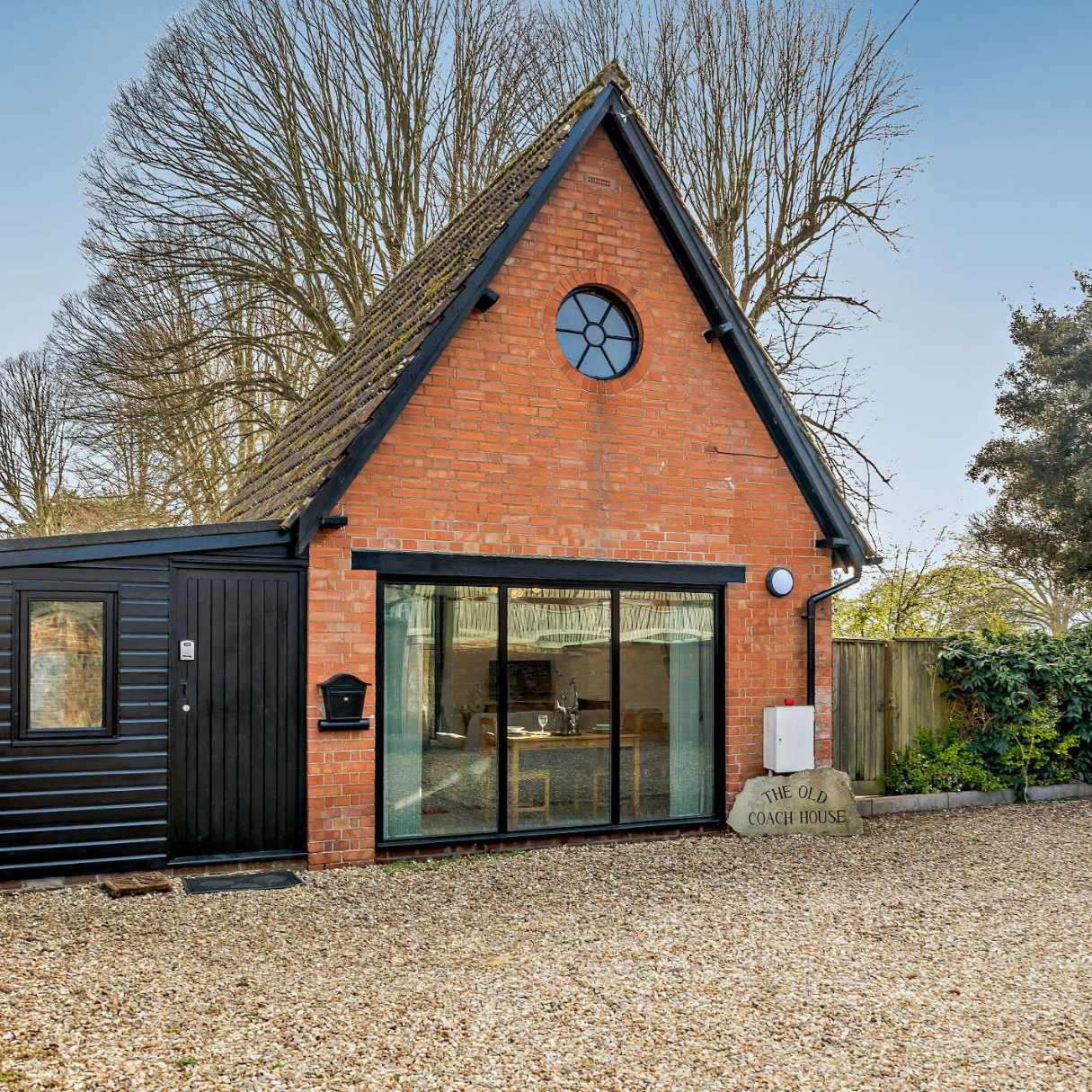
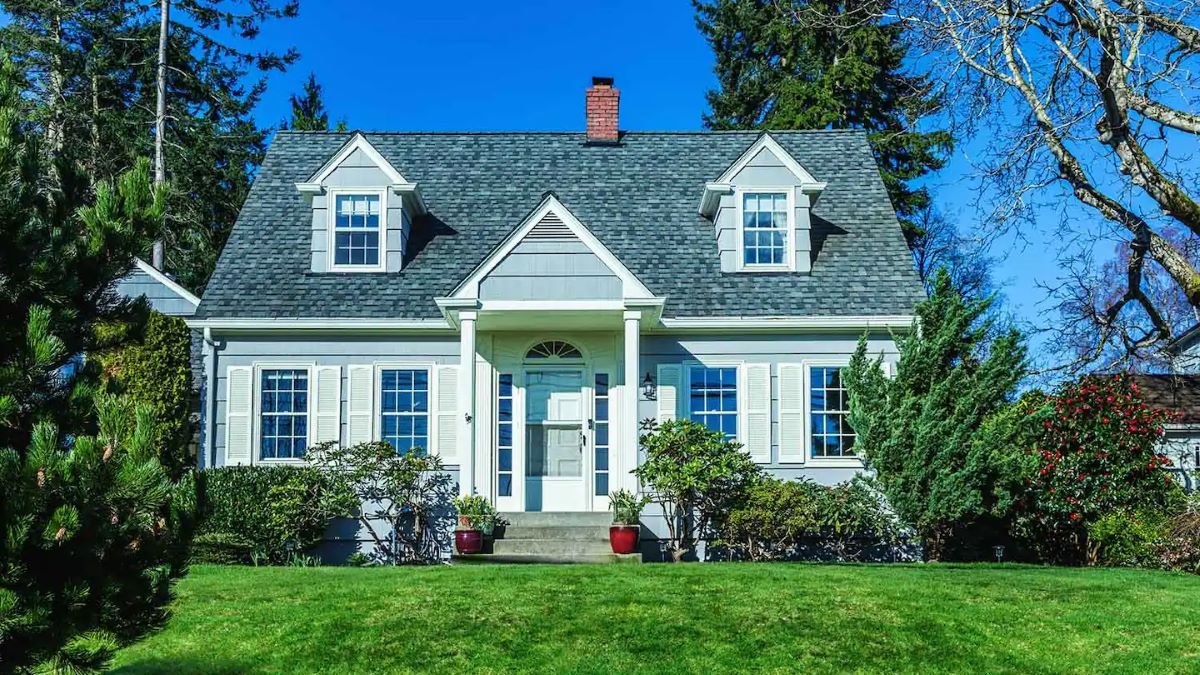
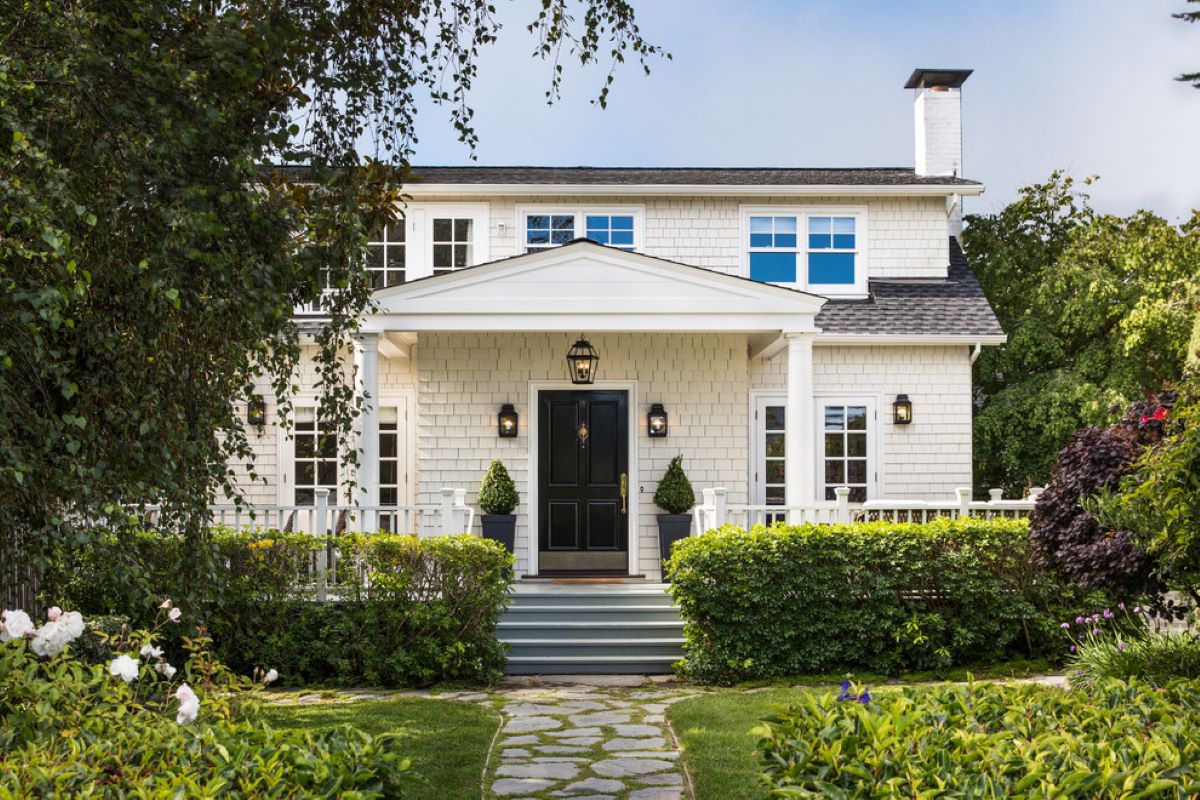


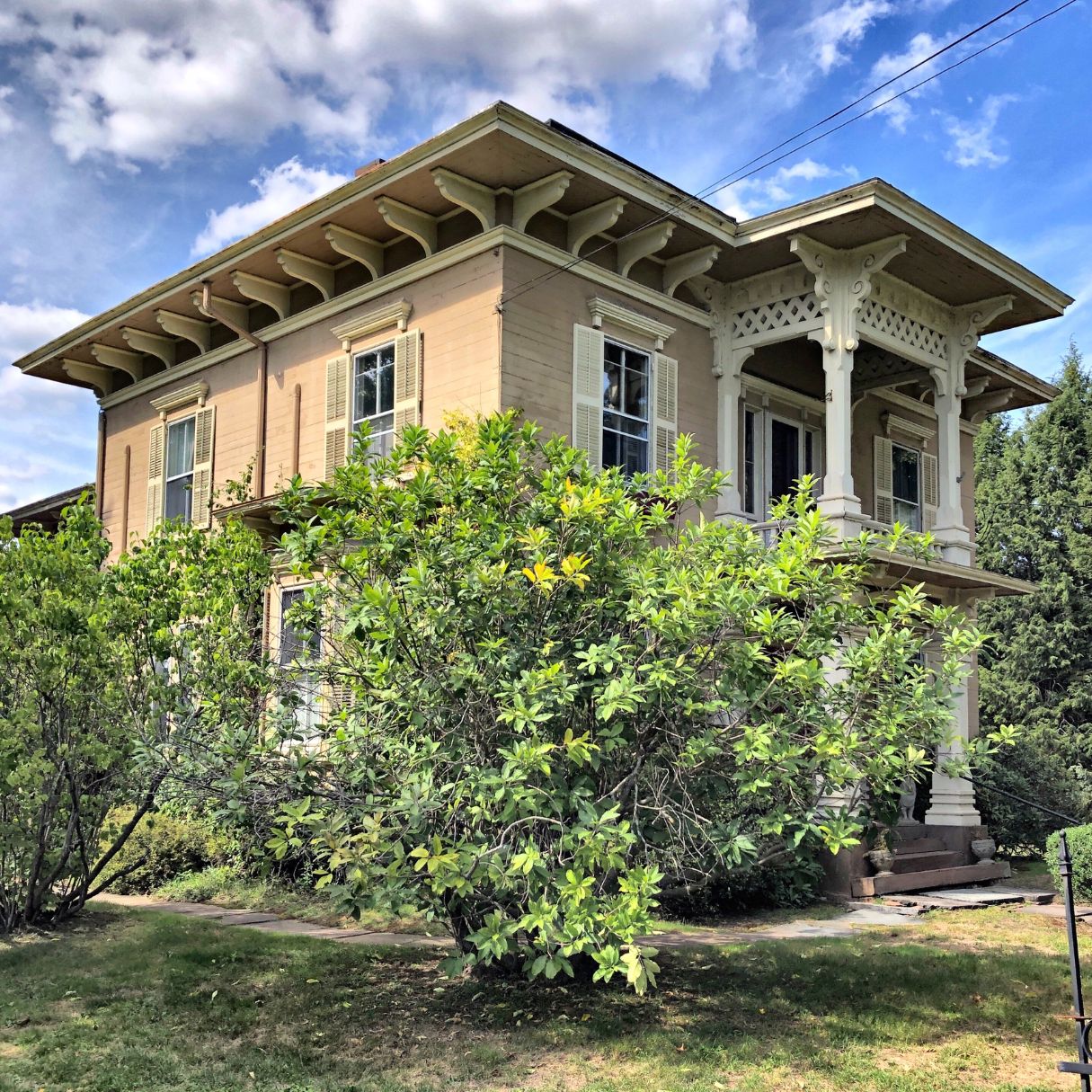
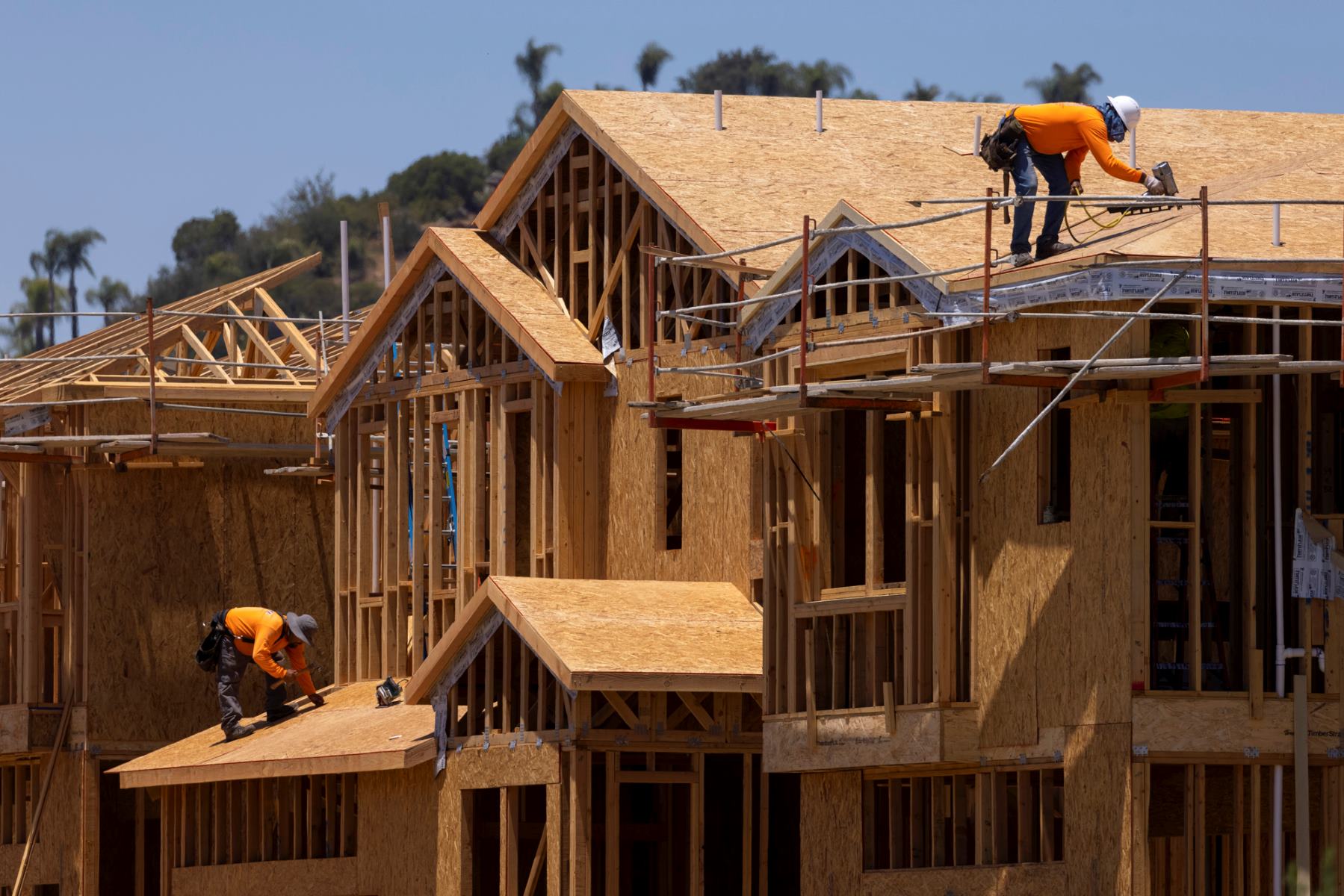
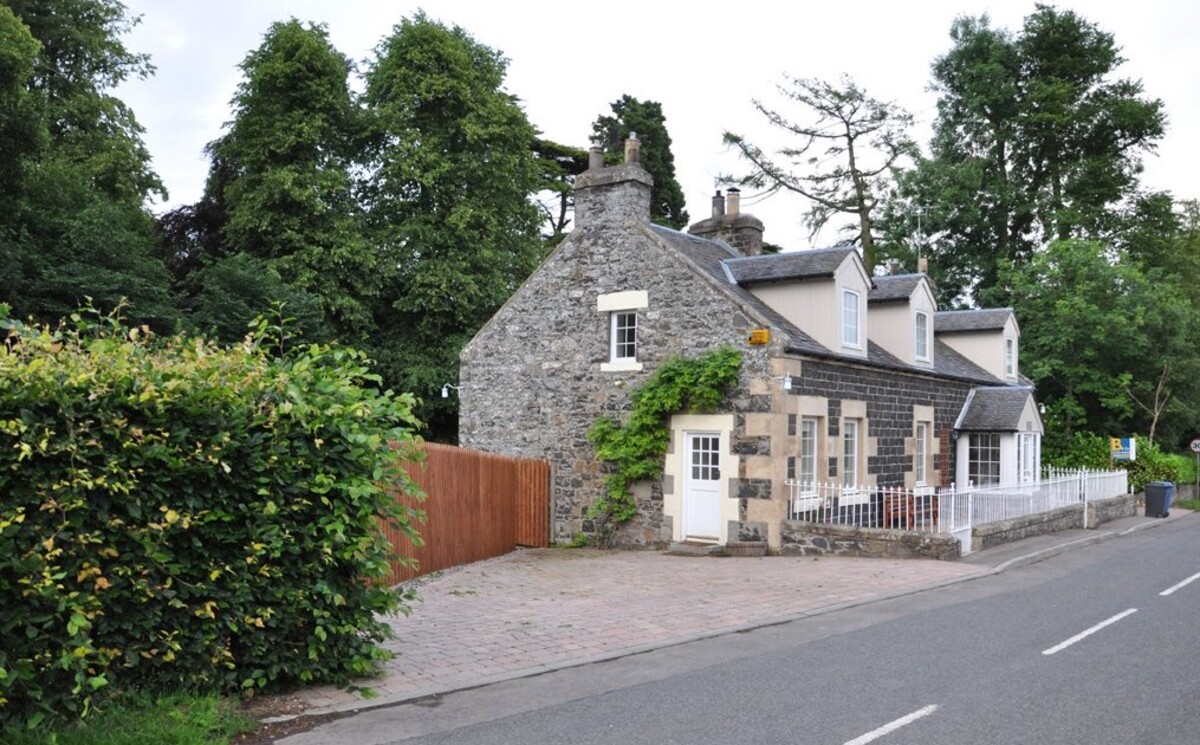
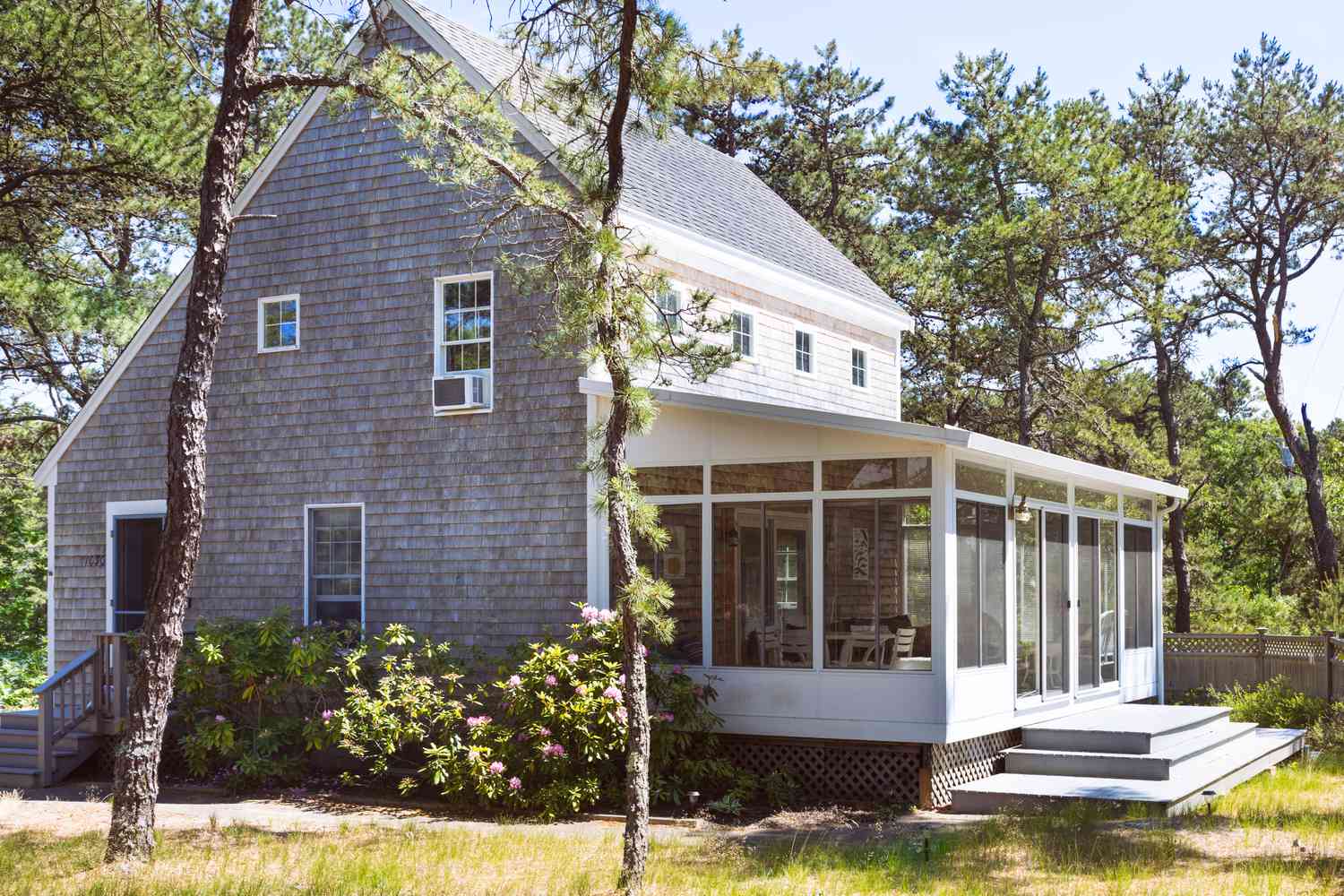
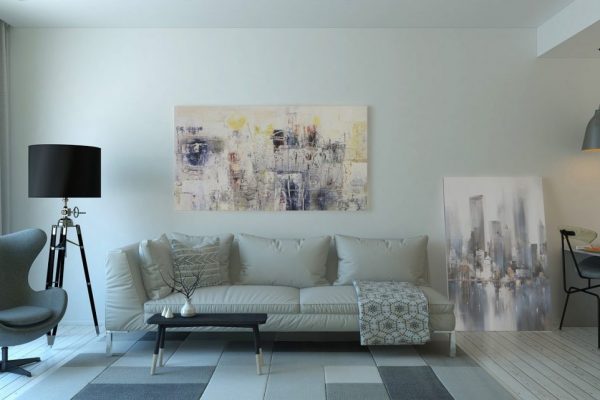
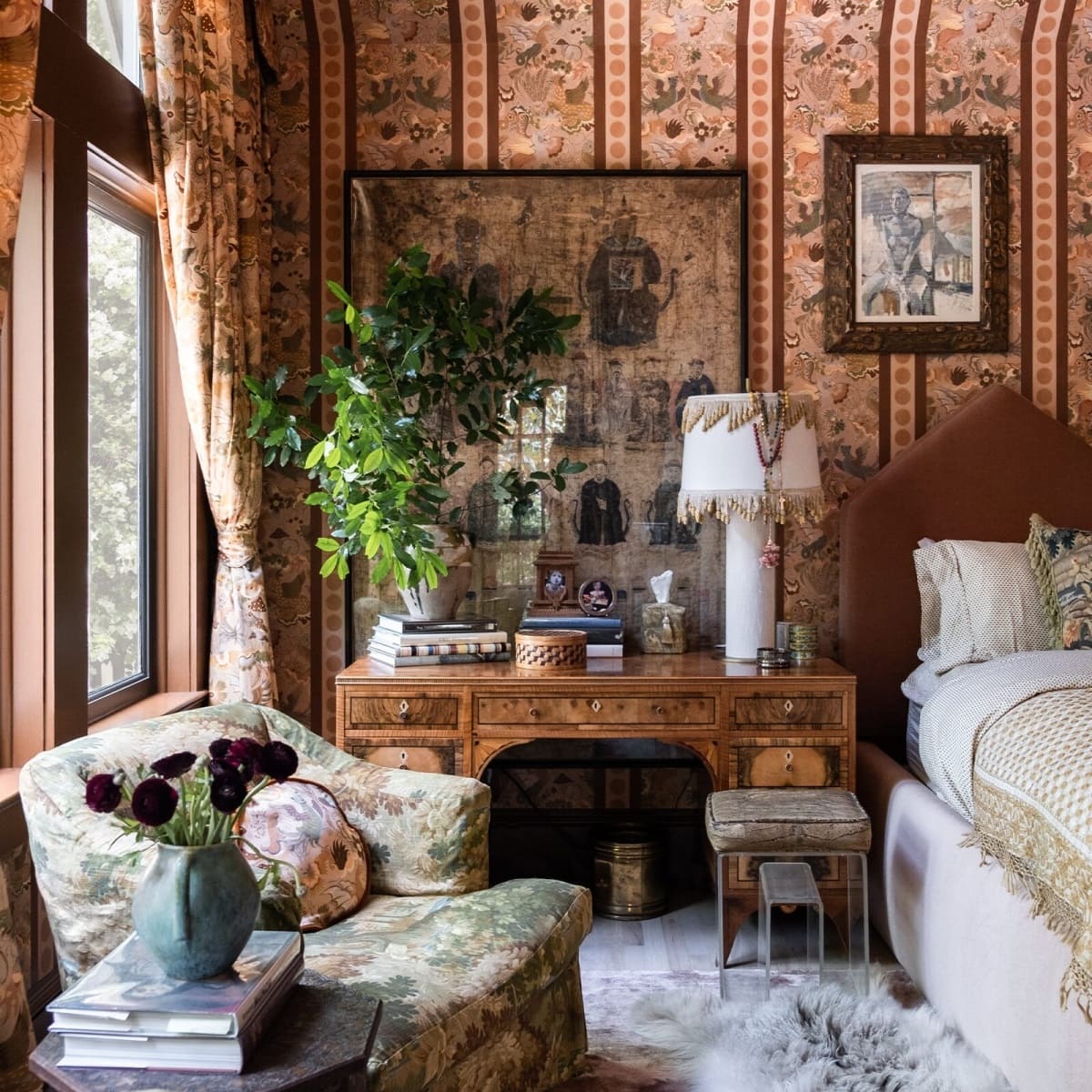

0 thoughts on “17 Victorian Houses With The Decorative Details That Define The Era”